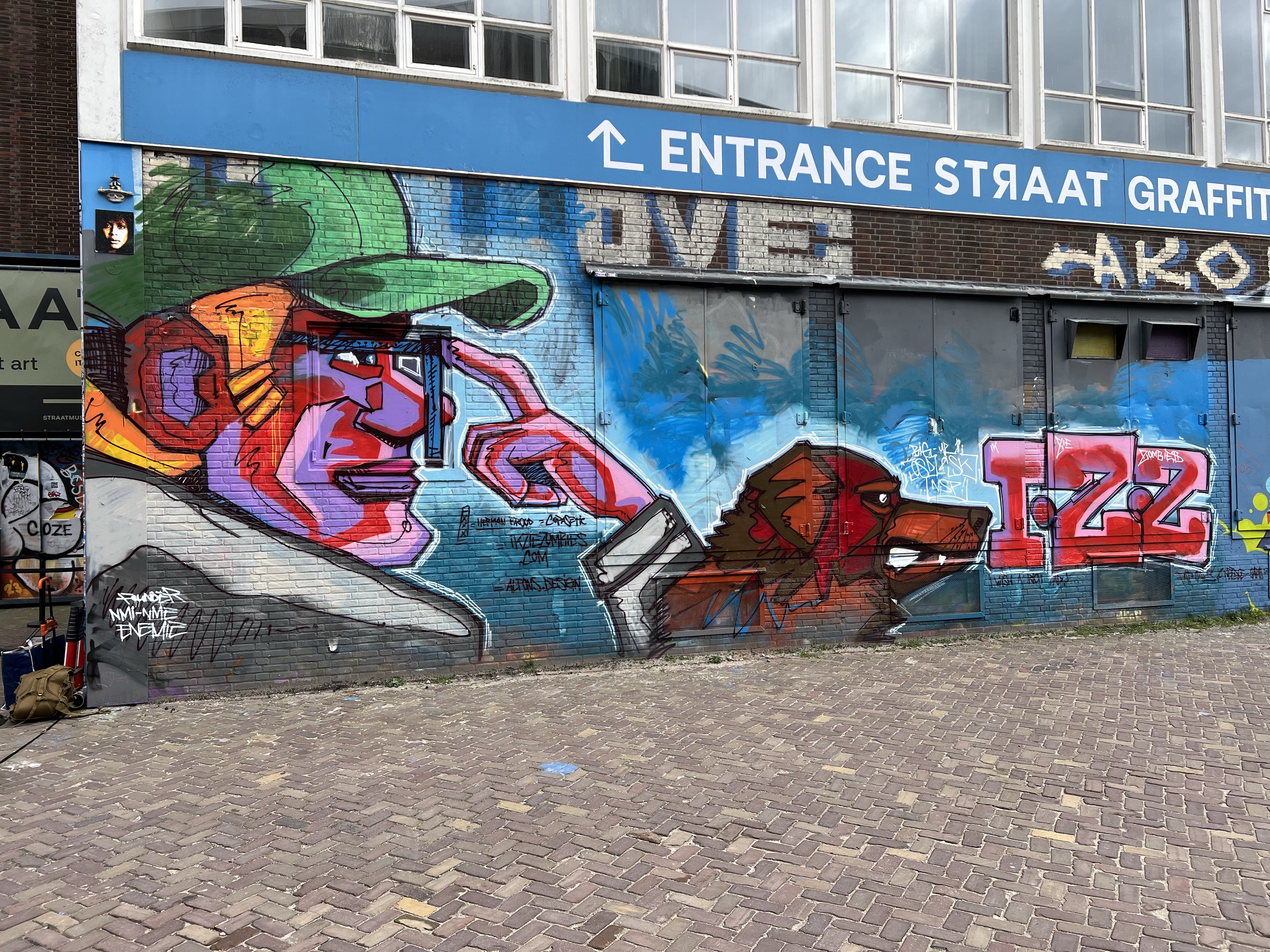Your cart is currently empty!
Exploring Amsterdam’s Graffiti Culture: From Damage Approach to the Rise of STRAAT Museum

Graffiti, with its myriad forms and techniques, has long been a subject of fascination and controversy. From the subversive nature of street art to the vibrant expressions of urban culture, graffiti has left an indelible mark on cities worldwide. In this essay, we delve into Amsterdam’s graffiti scene, exploring the damage approach, the emergence of STRAAT Museum, and celebrating iconic artists like Herman Brood and the Copasetic Crew.
The Damage Approach:
At the heart of graffiti culture lies the damage approach, characterized by the use of fat caps and needle caps to create bold, expressive artworks on urban surfaces. This approach, often associated with defiance and rebellion, has been both praised for its artistic innovation and criticized for its perceived vandalism. Yet, within the chaos of spray paint and urban decay, a vibrant subculture thrives, with artists pushing the boundaries of creativity and expression.
STRAAT Museum on the NDSM Wharf:
Amidst the industrial landscape of Amsterdam’s NDSM Wharf, STRAAT Museum stands as a testament to the evolution of graffiti into a respected art form. Founded as a homage to urban creativity, the museum showcases the work of local and international street artists, providing a platform for their voices to be heard. From towering murals to intricate stencils, each piece tells a story of the streets, inviting viewers to engage with the city’s rich cultural tapestry.
Celebrating Icons: Herman Brood and the Copasetic Crew
No exploration of Amsterdam’s graffiti culture would be complete without acknowledging the contributions of icons like Herman Brood and the Copasetic Crew. Known for their distinctive Dutch Amsterdam style, characterized by bold colors and dynamic compositions, these artists have left an indelible mark on the city’s landscape. Their work reflects the spirit of Amsterdam – vibrant, eclectic, and unapologetically bold.
The New Front of STRAAT Museum: Alfons Scholing and the Enemie Crew
In a nod to the next generation of graffiti artists, STRAAT Museum unveils its new front, a collaboration between Alfons Scholing, founding father of the Enemie Crew, and renowned artist Sket, known for his clean aesthetics and polished character work. The massive mural mirrors the clean aesthetics of Sket while showcasing Alfons Scholing’s raw and technical bombing style. It serves as a testament to the museum’s commitment to honoring the past while embracing the future of graffiti art.
In conclusion, Amsterdam’s graffiti culture is a tapestry of creativity, rebellion, and community. From the damage approach of street art to the rise of institutions like STRAAT Museum, the city continues to be a beacon for urban artists worldwide. As we celebrate the legacy of icons like Herman Brood and the Copasetic Crew and embrace the new frontiers of graffiti art, we are reminded of the power of creativity to transform our urban landscapes and ignite our imaginations.



















